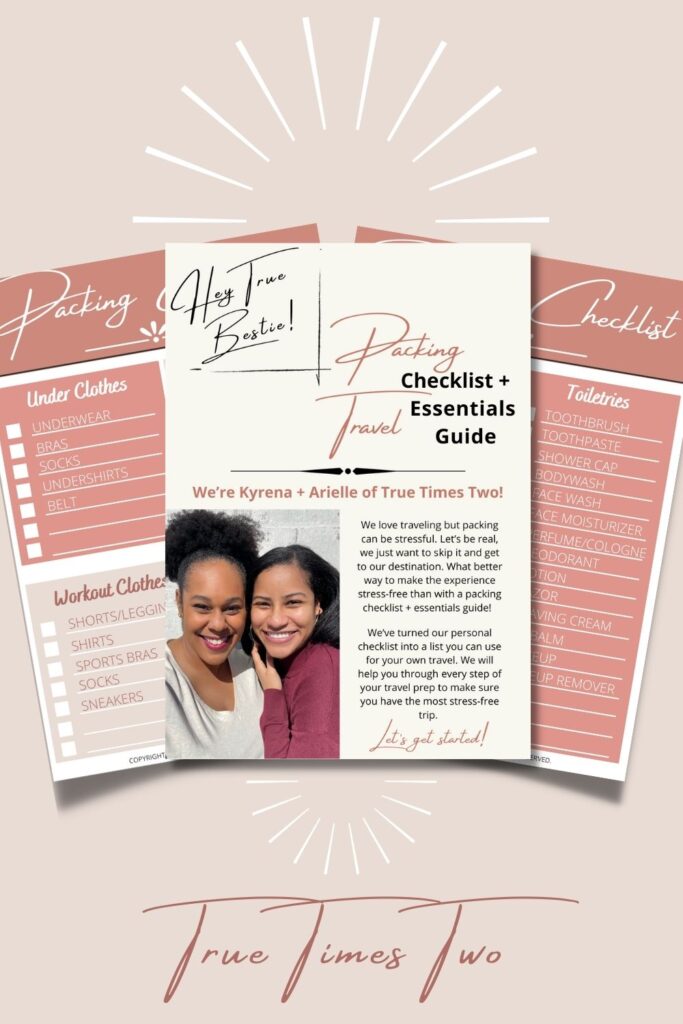Did you know that most employers only review your resume for 6 seconds before deciding to offer you an interview? I was shocked when I first heard those statistics!
How could something so important, so life-changing that could land me a new job get judged in a matter of 6 seconds? But I knew this also meant that to have a good resume, it had to be flawless and bulletproof. After all, your resume is the first impression your potential future boss has of you so you want to make sure that it’s clear, strong, and shows just how awesome you are. You don’t want something like a silly grammatical error or outdated resume advice to keep you from getting an interview and then ultimately, your dream job.

As you write your resume—or give your resume its six-month update—here are 9 common resume mistakes you may be doing that are stopping you from landing that interview.
1. You’re Highlighting duties instead of accomplishments
When writing a resume, avoid copying and pasting your current job description responsibilities onto your resume. The goal is to easily show your employer how you added value to your role. Using concrete statements detailing numbers, people managed, sales figures are always much more helpful to highlight your accomplishments.
For example, which of these sound better for a restaurant manager:
- Worked with employees in a restaurant setting.
- Recruited, hired, trained, and supervises more than 30 employees in a restaurant with $1 million in annual sales.
The second one sounds so much better! Not only does it explain how you worked with employees but explains the extent of your oversight and grabs the potential employers’ attention.
My approach when reviewing my resume is to go line by line and use the STAR method — provide the situation, task, action, and result of different initiatives you have been involved in, making sure to include specific information like metrics as relevant.
Here’s a quick example of how I have used this for my previous job:
Before Star…
- Trained students and staff throughout the year.
- Oversaw housing process for first-year students and families.
After Star…
- Facilitated ongoing training for 130 Resident Advisors, 25 professional and graduate staff members on leadership crisis management.
- Administered housing process for new student orientation which included: assigning rooms for approximately 3,000 students and 650 family members for 7 orientation sessions.
The more you can quantify, the more you can help a hiring manager understand the scope of what you’re able to achieve. Keep this in mind when writing your resume.
2. Your resume has typos & Grammatical errors
Grammatical errors and typos are indications of two skills that are essential to almost any job: communication and attention to detail. Without meaning to, they make you look sloppy and tell the story that you may not be diligent in your work or cannot communicate properly with co-workers, supervisors, and clients.
Now you’re probably thinking, “But it’s just one small mistake can’t they overlook it”. However, one small mistake with the biggest client they’ve ever had could cost the company thousands if not millions. Potential employers want to feel confident when hiring you that your small mistakes will not lead to big consequences.
When folks think of grammatical errors and typos they often think of misspelled words. However, don’t forget to look out for missing words, like “oversaw three publishers” vs “oversaw a team of three publishers”.
Lastly, another common resume mistake is writing about previous jobs in the present tense. Generally, you should talk about old jobs in the past tense, and your current job in the present tense.
Here are a few tips to catching these resume mistakes:
- Try printing your resume out, changing the font, or copying it into a blank email.
- Spell check then proofread by placing a finger on each word.
- Reading it out loud is another option for catching mistakes.
- Call up a friend or family member to read through your resume before you submit it!
These strategies will help you see your words with fresh eyes, which can help with catching errors.

3. Your Resume is longer than 2 pages
Unless you’re applying for an executive position, your resume shouldn’t be longer than two pages long. Think of your resume as a highlight reel that captures all of your best job accomplishments that captures a hiring manager’s fleeting interest.
A resume, when done right, should engage the reader enough so they pick up the phone and give you a call to find out more about you. It is not to tell your entire career history and give every detail of your jobs.
I have found that the easiest way to shorten a resume is to focus on your formatting. Balance white spaces and using underlining, italics, bold, and capitalization for emphasis. When listing details under a section, use bullet points (instead of numbers or letters). This will call attention to the most important aspects you’d like to highlight.
Be sure to list your “Experience” heading in order of reverse chronological order (most recent job first), and the details (i.e., tasks, accomplishments) of each job in order of importance. This a great time to decide if that job from 7 years ago still is relevant include in this resume.
Note: This does not mean you should abbreviate. Whatever it is, spell it out, or your reader will have no idea what you are talking about.
4. You’re resume format is too busy
If your resume is wall-to-wall text featuring five different fonts, it will most likely give anyone reading it a headache.
When it comes to your resume format, less is usually more. The more elaborate or creative you get with your resume format, the more likely recruiters will be forced to hunt for the information they care about, and the more likely they will skip over your application altogether.
Try sticking with a black and white resume with clear headings and spacing because it will stand out more than a colorful resume with excessive use of boxes and line borders coming from all directions.
There are a few exceptions to this depending on the industry you are in such as graphic design or art. This is another great time to have a friend or family outside of your job sector review it before sending it to future employers.
5. You Lied on your resume
This should be an obvious one but I’m going to say it anyway, “DO NOT LIE ON YOUR RESUME…EVER.”
I know it can be tempting to embellish here and throw an extra dollar sign there but please make sure it is factual and data-driven. The interview process can bring such lies to light, especially when you find yourself unable to speak in detail about the things you lied about.
In addition, background checks and reference checks often expose a resume’s lies.
Getting caught in a lie won’t only cost you the job, but it may lead to further repercussions. Worst-case scenario, you’ll get blackballed from your desired industry.
6. You’re still Using an “objective statement”
If your college career counselor ever told you to put an objective like “Find an entry-level position in marketing” at the top of your resume, I’m giving you full permission to disregard them!
We know your objective is to get an internship/job. That’s why you’re applying. Using one also indicates that you’re not up-to-speed with current resume trends.
The point of an objective statement used to be to tell them why you want the job. Instead, use the entire resume to show recruiters why they should hire you for the job.
Experts today suggested that instead of writing an objective consider wiring a “summary statement”. A summary can come in many forms but is typically a one- or two-sentence statement that describes you, your level of experience, and your key skills.
You could also opt for nothing at all! This is my personal preference and I rely on my resume bullets and cover letter to speak to my qualifications.
Note: Another old-school formality to abandon is writing, “References available upon request.” If they want your references they will definitely ask for them!

7. You’re saving your resume incorrectly
So by this point, I think you understand the importance of resume length and formating. But it will all be for nothing if you send your resume and all the sections and sentences cut off.
If you don’t want all your hard work to go to waste then save your resume in a PDF format. I WILL SHOUT THIS FOR DAYS! If you submit in a word format, it will get messed up and the alignment will be off. Save it as a PDF or don’t waste your time formatting it.
When saving it as a PDF make sure to save it as last name, first name. When an employer downloads your resume and it was sent as “resume_91” how will they find it on their computer and how will they know it yours!
Taking these two extra steps will give you the peace of mind that your future employer will read the resume exactly as you intended and they will easily find it again when looking to contact you for that interview!
8. you’re Choosing weak action verbs
A great resume paints a picture of an active, inspired, and engaged professional. To start your bullet points, using verbs like ‘helped’ or ‘assisted’ to begin listing your accomplishments does not showcase the extent of your potential.
To be honest this was an area that I struggled with for a long time. I knew that I was using measurable and results-orientated language but the phrasing still felt weak.
Instead of saying you’re “highly creative,” for instance, show it through the use of action verbs—say that you “designed and implemented a new system that achieves x, y, and z.”
By going through each section of my resume one by one, I was able to take my resume to the next level with this simple change. I even challenged myself to never use the same verb twice and OMG what a difference that made! It made my resume sound much more dynamic than ever before.
9. You’re Using the same resume for all your job applications
So you’ve taken a few hours out of your day to implement all of these tips and now you have a good resume! But don’t fall into the trap of using this exact resume for every job application in the future.
When you’re applying to multiple jobs, it’s tempting to use the same resume and blast it out everywhere you’re applying to. But that strategy may end up preventing your resume from getting in a recruiter’s hands at all.
It may be a pain to create a customized resume for each company, but if you’re truly interested in a position, it’s worth it. Employers want to feel special and want you to write a resume specifically for them. They expect you to clearly show how and why you fit the position for their specific organization.
One helpful bit of resume-writing advice: Use the job description of the job you’re applying for to help you tailor your resume for that particular role. Try to naturally alter your text to include a few keywords and phrases from the description—without using the exact wording.
In addition to your typical resume sections—contact info/header, summary, work experience, and education—you may want to add a “technical skills,” “certifications,” “volunteer experience,” or “interests” section to your resume so that you can add in further relevant information for a role.
If you don’t customize each resume, then all your previous efforts may have been for nothing. Be sure to make time for this final step before sending it off to recruiters.
Creating a new resume or updating your current resume can be tough but hopefully, these tips to avoid these common resume mistakes can point you in the right direction. Be sure to keep in mind that each job sector will have its own “rules” about what is considered a good resume. It may even vary from reviewer to reviewer! However, it is important to use your best judgment and do your research to be sure you are sticking to best practices.
Good luck on landing that interview!
Did you find this post useful or want to get back to it later? Save THIS PIN to your Resume Tips board on Pinterest!






Leave a Reply